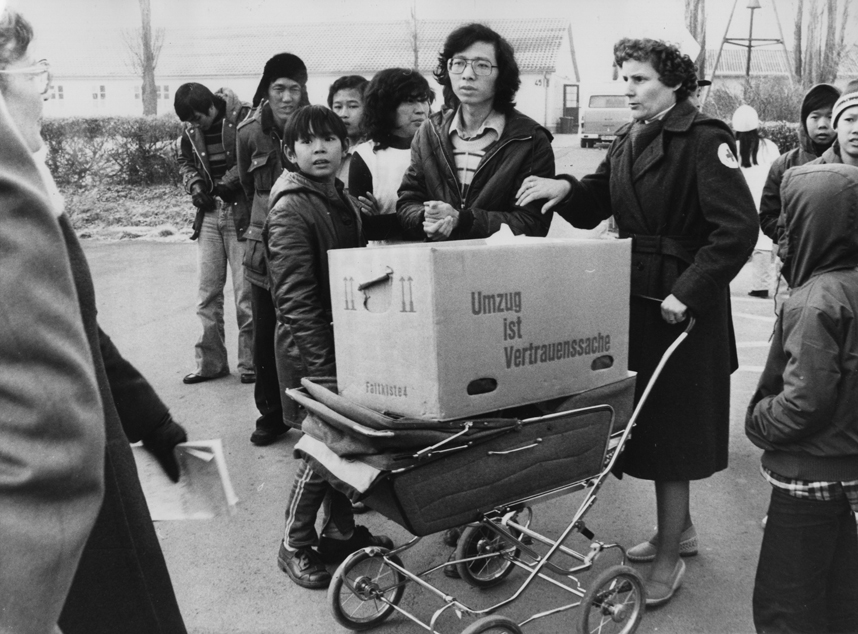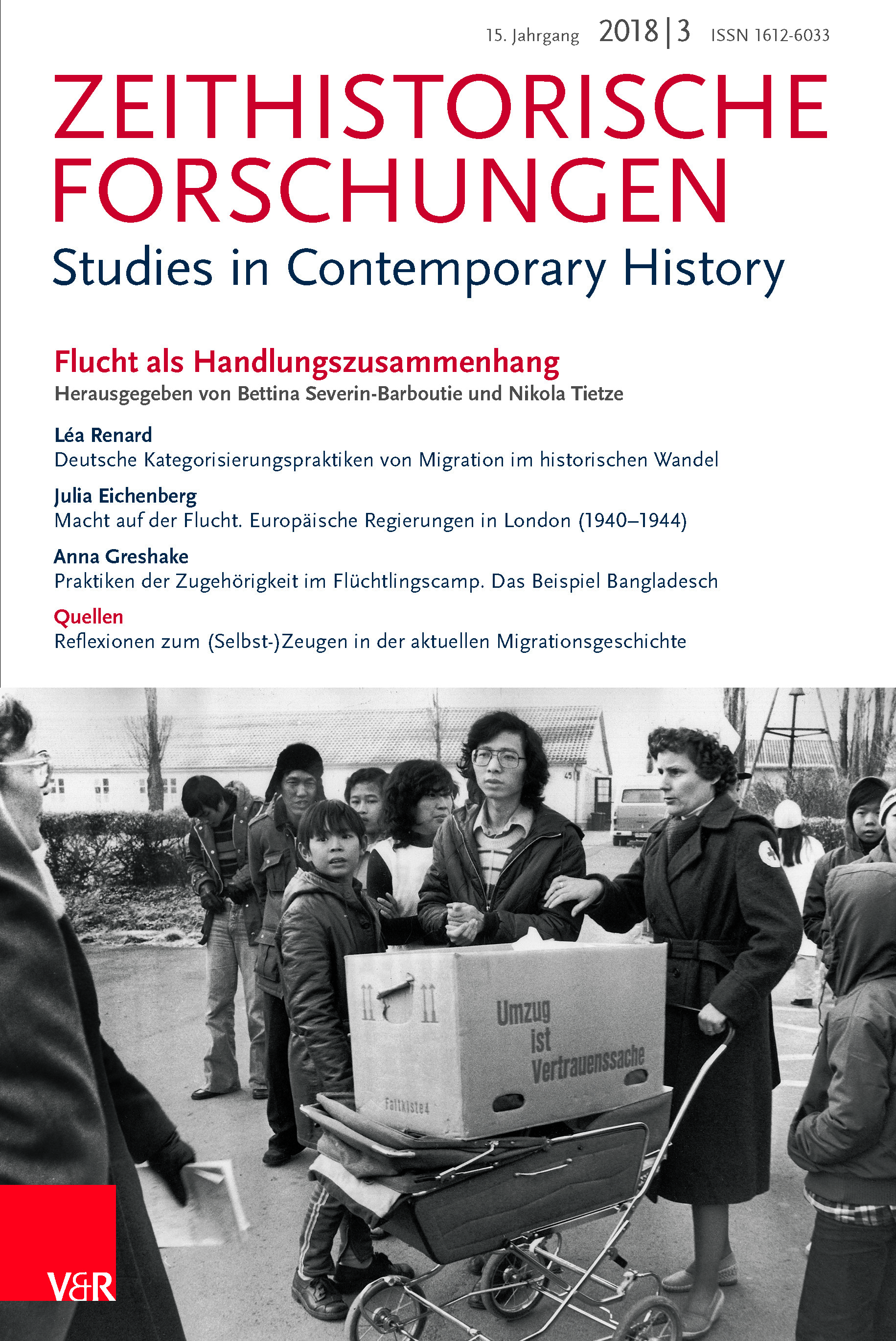Heft 3 / 2018
Aufsätze | Articles
Mit den Augen der Statistiker
Deutsche Kategorisierungspraktiken von Migration im historischen Wandel
AbstractDieser Beitrag geht der Frage nach, wie Migration durch Statistik sozial relevant wird. Welche Kategorien kommen dabei zum Einsatz? Zuerst wird die historische und wissenssoziologische Perspektive erläutert. Im zweiten und dritten Teil werden historische Umbrüche in der Kategorisierung von Migration am Beispiel der amtlichen Statistik im Deutschen Kaiserreich und in der Bundesrepublik Deutschland skizziert. Der Fokus verschob sich von Migration als Ein- und Ausreisebewegung zu Migration als Alteritätszuschreibung (gestützt auf die Kategorie »Migrationshintergrund« ab 2005). Vor diesem Hintergrund wird im letzten Teil gezeigt, wie sich vergangene und aktuelle Kategorisierungen von Geflüchteten mit der Migrations- und Integrationssemantik verbanden bzw. verbinden. Über die Rekonstruktion der semantischen Brüche und Kontinuitäten hinaus dient die historische Kontextualisierung dem Ziel, heute gängige Kategorien für Migration und Flucht besser reflektieren zu können, die in der Wissenschaft, Politik und Verwaltung verwendet werden.
* * *
Through the Eyes of Statisticians. German Categorisation Practices for Migration in Socio-Historical PerspectiveHow do statistics contribute to the social making of migration? What categories are involved in this process? The first part of the article outlines the historical and sociological perspective on knowledge adopted here. In the second and third parts, historical ruptures and continuities in migration categorisation are traced, looking at official statistics in the German Empire and the Federal Republic of Germany. In the German Empire, migration was used in official statistics as a category describing the movement and mobility of people. Since 2005, the term ›migration background‹ (Migrationshintergrund) has been used in Germany as a category for the description of people themselves. The final part of the article therefore analyses the connections between this semantics of migration and integration on the one hand and past and present categorisations for refugees on the other. Besides reconstructing historical and semantic shifts, the paper aims to historically contextualise and thus reflect on the categories that are used to speak about migration and flight in research, administration and politics today.
Macht auf der Flucht
Europäische Regierungen in London (1940–1944)
AbstractWährend des Zweiten Weltkrieges flüchteten etwa 150.000 Europäer vor Krieg und Besatzung nach Großbritannien. Unter ihnen waren Angehörige der vormaligen europäischen Regierungen, Verwaltungen, politischen Eliten, Militärs und Königshäuser. Aus ihren Reihen bildeten sich Nationalkomitees und Exilregierungen, die die nationale Souveränität ihrer Länder trotz deutscher Besatzung aufrechterhalten und als Alliierte für einen gemeinsamen Sieg über Hitler eintreten wollten. Im Zentrum Londons lebten und arbeiteten sie in enger Nachbarschaft. Rechtlich betrachtet erreichten die Mitglieder der Exilregierungen London meist als individuelle Flüchtlinge; sie verließen die Stadt überwiegend als Angehörige anerkannter Regierungen. Eine genauere Untersuchung des »London Moment«, dieser formativen Phase europäischer Politik, bricht den vermeintlichen Gegensatz zwischen Macht und Ohnmacht auf und trägt so zur Reflexion über Flucht und Flüchtende bei. Der Aufsatz erläutert die Entwicklung des rechtlichen Status der Exilanten und folgt vier Fallbeispielen von der Ankunft zur Etablierung in London.
* * *
Power on the Run. European Governments in London, 1940–1944Some 150,000 Europeans fleeing war and occupation arrived in Great Britain during World War II. Among their number were members of the former European governments, administrations, political elites, armed forces and royal dynasties. National committees and governments in exile were formed from their ranks, seeking to uphold the national sovereignty of their countries despite the German occupation and to join forces as allies to defeat Hitler. They lived and worked in central London in close proximity to one another. In legal terms, most members of the governments in exile arrived in London as individual refugees; they largely left the city as members of recognised governments. A closer exploration of the ›London Moment‹, this formative phase in European politics, questions the supposed dichotomy between power and powerlessness and helps us reflect on flight and those forced to flee. The article looks at the development of the legal status of émigrés and follows four individuals from their arrival as refugees to becoming established in London.
Praktiken der Zugehörigkeit im Flüchtlingscamp
Die urdusprachige Minderheit in Bangladesch – der lange Schatten der indischen Teilung
AbstractDas Ende der britischen Kolonialherrschaft in Indien 1947 zerteilte das Land nicht nur, sondern verursachte auch (jahrzehntelange) Migrationsbewegungen. In den Ostteil des neu gegründeten Pakistans migrierten urdusprachige Muslime, die der banglasprachigen Mehrheitsgesellschaft trotz gemeinsamer Religionszugehörigkeit überwiegend fremd gegenüberstanden. Als die Spannungen zwischen den ungleichen pakistanischen Landesteilen im Kampf um die Unabhängigkeit Ostpakistans eskalierten und daraus 1971 der neue Staat Bangladesch entstand, galten die Urdusprachigen als »Volksverräter« und verloren ihre Staatsbürgerschaft. Zum Teil bis heute leben sie mit ihren Nachkommen in mehr als 100 Flüchtlingscamps innerhalb des Landes. Der seit über 40 Jahren andauernde Wartezustand dieser Gruppe führt zu unterschiedlichen Strategien und Konflikten. Geschlecht, Bildung und besonders das Alter entscheiden über das Selbstverständnis der Campbewohner: Während sich die ältere Generation weiterhin für eine Repatriierung nach Pakistan einsetzt, fordern die Jüngeren verstärkt die bangladeschische Staatsbürgerschaft, die 2008 vom Obersten Gerichtshof des Landes formal anerkannt wurde. Dazwischen steht eine große Zahl Unentschlossener, die sich mit den Camps arrangiert hat. Der Aufsatz zeigt, dass weder Staatsangehörigkeit noch Staatenlosigkeit festgefügte Identitäten sind; Flüchtlingscamps sind zugleich Orte des Transits, der Vergemeinschaftung und der Stigmatisierung. Der praxeologische Ansatz des Diasporakonzepts bietet Zugang zu der perpetuierten migrantischen Situation der Urdusprachigen.
* * *
Practices of Belonging in Refugee Camps. The Urdu-speaking Minority in Bangladesh – The Long Shadow of the Partition of IndiaThe end of British colonial rule in India in 1947 not only divided the country but also caused migratory movements. Urdu-speaking Muslims migrated to the eastern part of the newly founded state of Pakistan, but largely remained foreign in a Bangla-speaking majority society despite a shared religious affiliation. As domestic political tensions between the unequal Pakistani regions mounted in the struggle for East Pakistan’s independence as Bangladesh in 1971, the Urdu-speaking people were considered ›traitors to the people‹ and stripped of their citizenship. To this day, many of them live with their descendants in more than 100 refugee camps within the country. This group has been in a state of waiting for over 40 years, resulting in different strategies and conflicts. Gender, education and especially age determine how the inhabitants of the camps view themselves. While the older generation continues to advocate repatriation to Pakistan, the younger generation is increasingly demanding Bangladeshi citizenship, their right to which was formally recognised by the country’s Supreme Court in 2008. There are also many between these two poles who are undecided and have reconciled themselves with living in the camps. The article shows that neither nationality nor statelessness are fixed identities; refugee camps are also places of transit, community-building and stigmatisation. The praxeological approach of the diaspora concept provides insight into the ongoing migrant situation of the Urdu-speaking people.
Essays
Zitation
Redaktionsschluss
Erweiterte Suche

